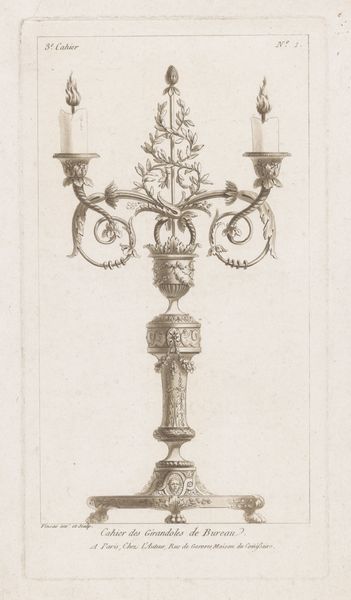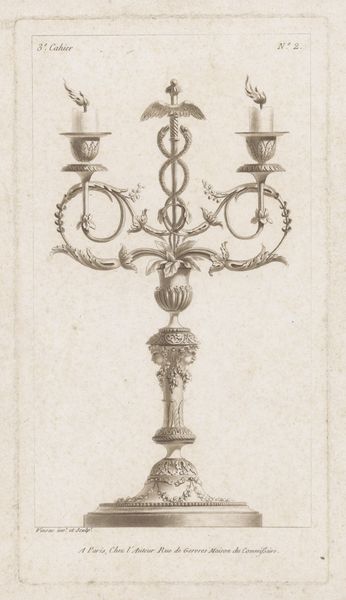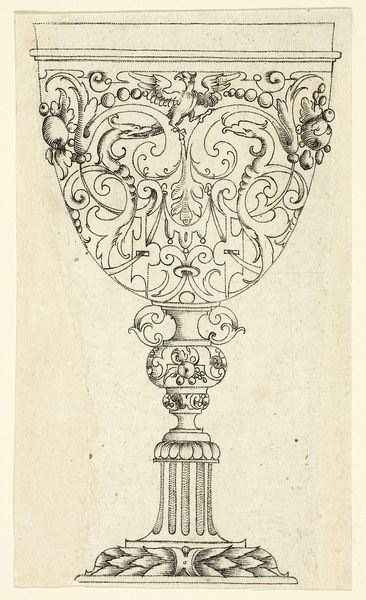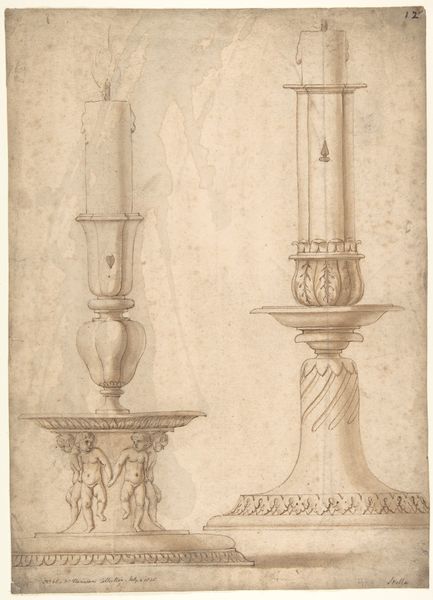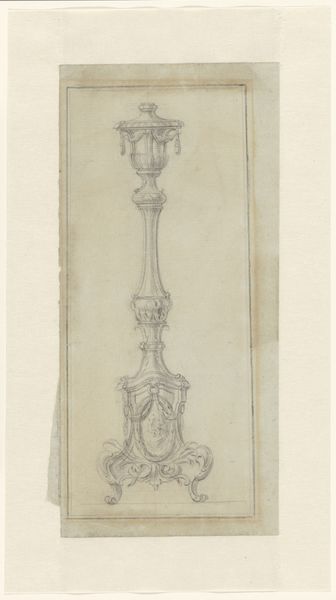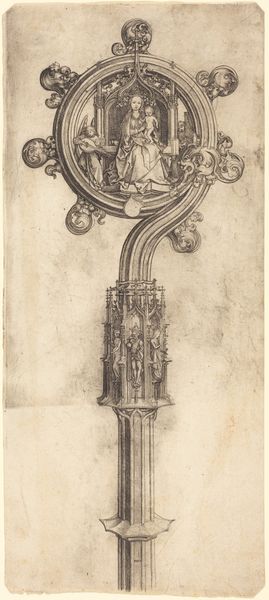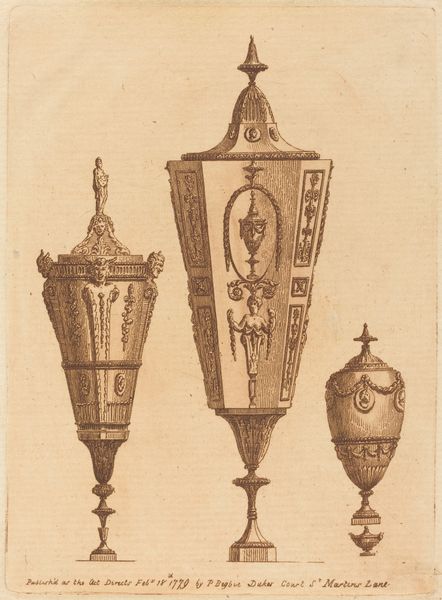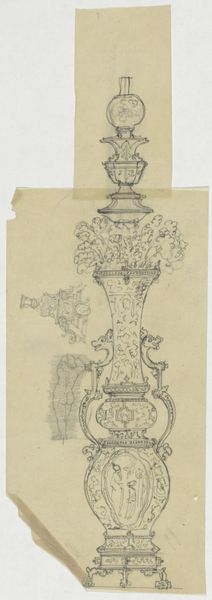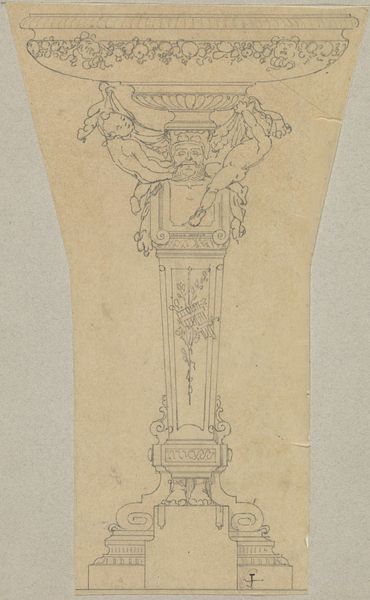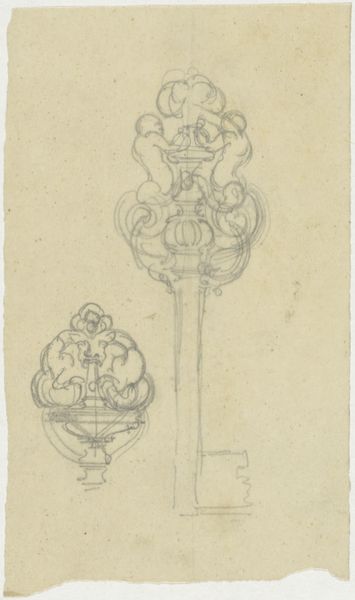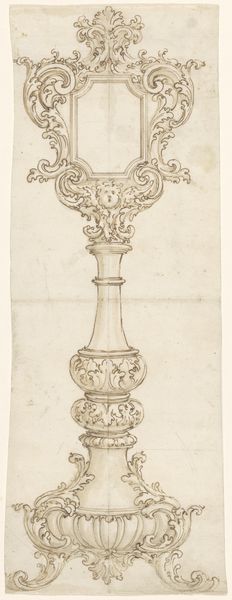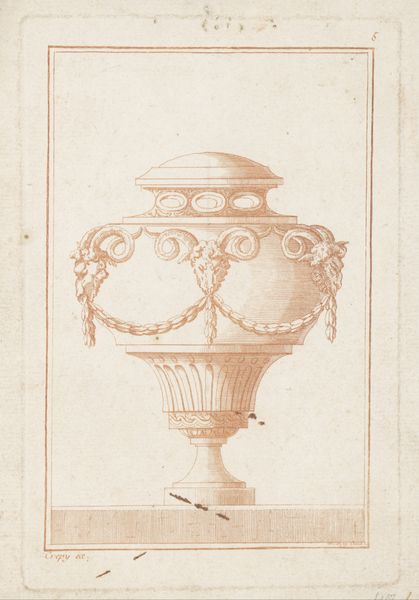
drawing, print, metal, engraving
#
drawing
#
neoclacissism
# print
#
metal
#
old engraving style
#
form
#
line
#
engraving
Dimensions: height 143 mm, width 103 mm
Copyright: Rijks Museum: Open Domain
Curator: Here we have an engraving titled "Drievoet en vaas" which translates to Tripod and Vase; it was created sometime between 1775 and 1797. The artist is Nicolas Xavier Willemin. Editor: The neoclassical style is striking! Very delicate lines—you can almost feel the cool metal they’re meant to represent. There's an appealing contrast of geometric form versus more whimsical, organic, ornamental elements, particularly on the vase. Curator: Exactly! It speaks volumes about the cultural fascination with classical antiquity during this period. Notice how the print is part of a series titled “Recueil de vases, d'ornements & de figures tirées de l'antique”. It presents objects intended to inspire artisans and the upper class, shaping taste through printed imagery. Editor: The method and material of production also highlight an interesting aspect of access; an engraving like this would democratize access to such luxurious designs. What once may have been only attainable by the very rich becomes accessible through mass production; how many were printed, and who would have collected these? Curator: It's tricky to pin down exact numbers, but prints like this were collected by architects, craftsmen and wealthy individuals looking for design ideas, fostering a certain aesthetic standard across society. Editor: It speaks to the rise of industrial processes impacting even what we consider “art”—design, utility, the very concept of form follows function seems pertinent here. One really gets a sense of design moving from unique creation to something reproduced and distributed on a broader scale, and the influence of engravings on this shift should not be underestimated! Curator: Precisely, and looking at the depiction of classical figures as ornament also speaks volumes of how classical ideals are becoming part of everyday aesthetics of the time. Editor: Overall, I think looking at this print reminds me of the commodification of art: how even the most intricate of crafts may become reduced to simply images in print form for easy reference purposes. Curator: Indeed. This work functions on so many levels; a piece of art in itself but it reflects wider social currents, too.
Comments
No comments
Be the first to comment and join the conversation on the ultimate creative platform.
